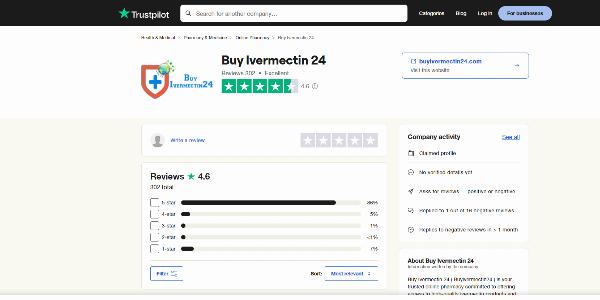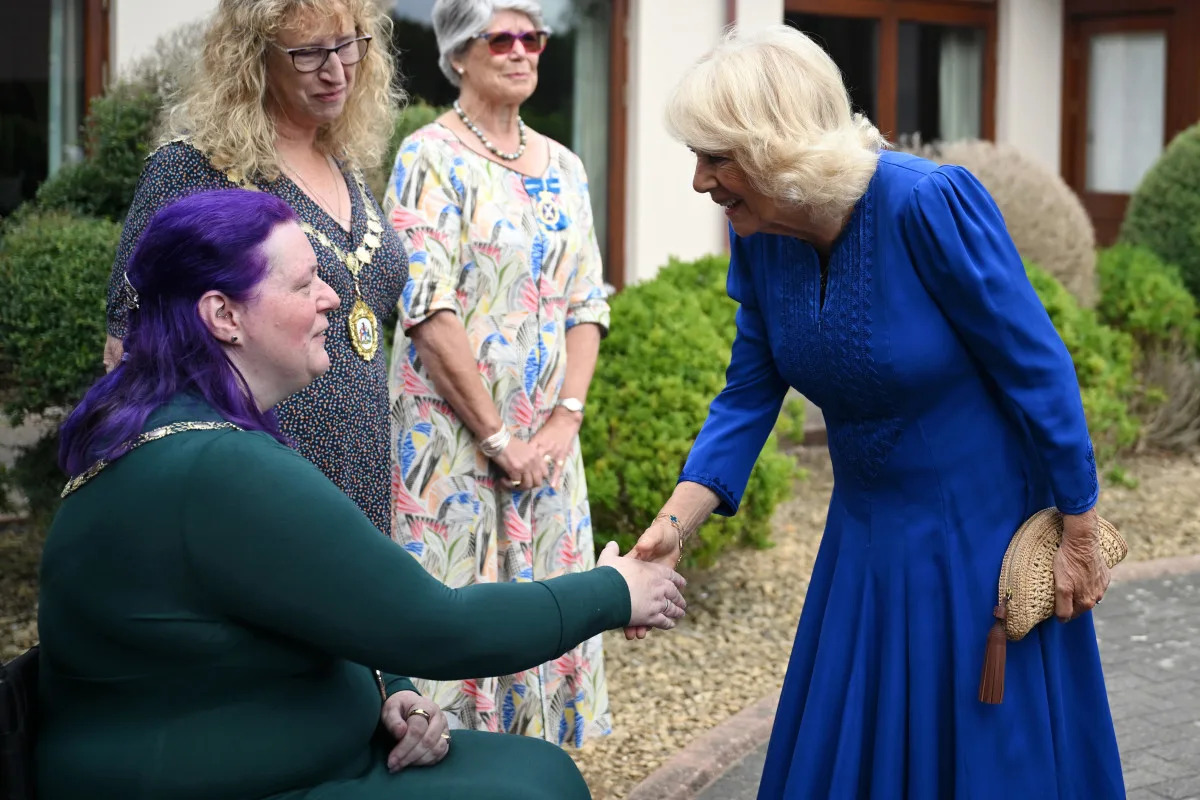Nobody wants to hang out on TV anymore
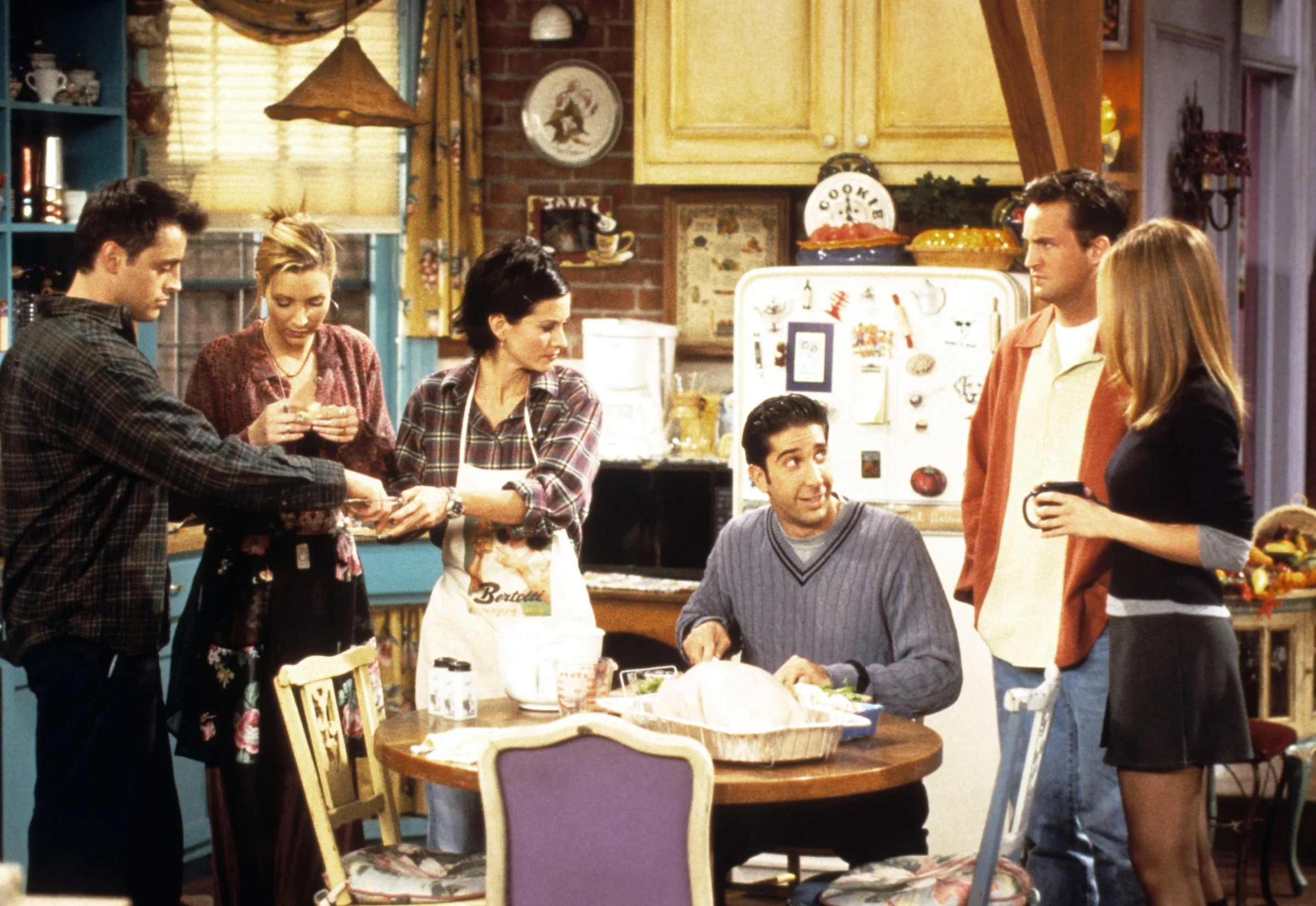
Back in the day, you could turn on your television, tune to any number of channels and see a group of four to six beautiful and quirky friends lounging around, talking about their lives, sharing the details of their recent bad dates, complaining about unruly bosses and bonding over the latest antics of weird neighbors. Cheers, Friends, How I Met Your Mother and New Girl all followed this model.
This was called hangout TV. It still exists today, but you don’t see characters just congregating at a coffee shop or meeting for nightly drinks at the same watering hole quite like they used to. In the most prestigious and talked-about shows these days, many of which were nominated for multiple Emmys on Tuesday, they’re solving problems at work (Severance, The Studio), scrambling to save lives (The Pitt, Grey’s Anatomy), investigating crimes (Only Murders in the Building, Slow Horses) or getting into trouble on vacation (The White Lotus).
Aside from a couple of new shows driven by the TikTok-famous personalities that star in them, like Overcompensating and Adults, which are well reviewed but not broadly watched, it seems like no one wants to hang out on TV anymore. How did a trend that seemed to rule the small screen seemingly disappear entirely?
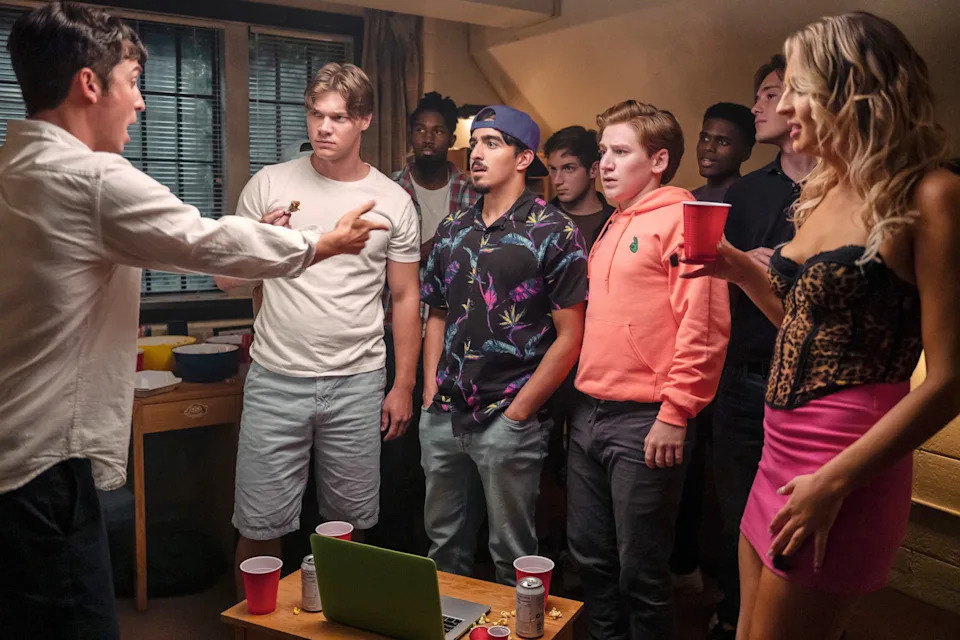 A party scene in the college hangout show Overcompensating. (Jackie Brown/Amazon/MGM Studios/Courtesy of Everett Collection)
A party scene in the college hangout show Overcompensating. (Jackie Brown/Amazon/MGM Studios/Courtesy of Everett Collection)‘Nostalgia is a powerful force’
Between 2015 and 2023, networks and streaming platforms were churning out high volumes of critically acclaimed shows. Now that the so-called Peak TV era is over and the number of original series made for adults has declined dramatically, viewers are relying on old standbys more than ever. According to the May 2025 trend report from audience data company Digital i, viewers are still drawn to nostalgic shows they know and love, like The Big Bang Theory, Gilmore Girls and Friends.
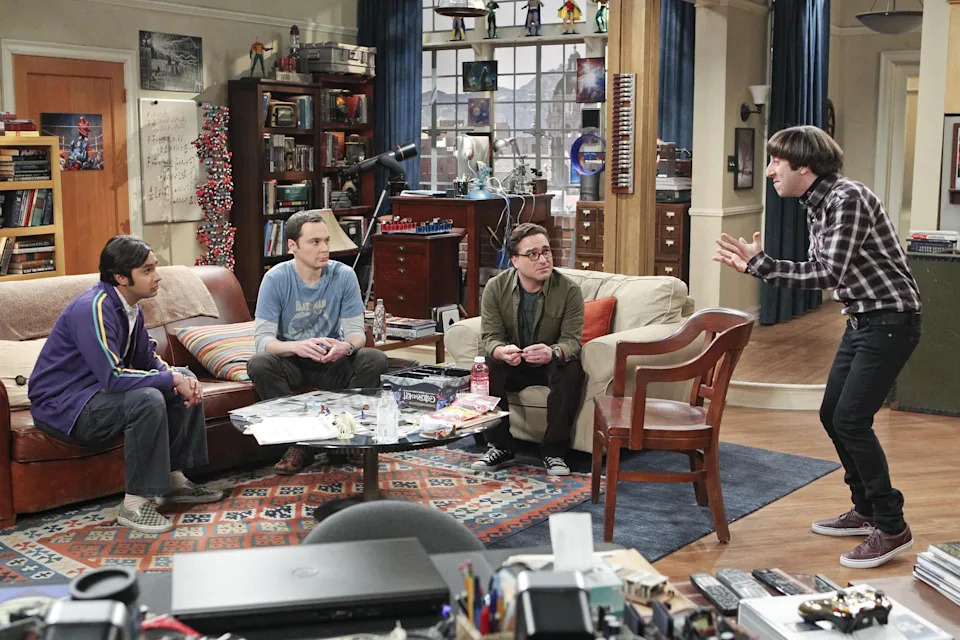 Kunall Nayyar, Jim Parsons, Johnny Galecki and Simon Helberg in an episode of The Big Bang Theory. (Sonja Flemming/CBS/Courtesy of Everett Collection)
Kunall Nayyar, Jim Parsons, Johnny Galecki and Simon Helberg in an episode of The Big Bang Theory. (Sonja Flemming/CBS/Courtesy of Everett Collection)Bob Batchelor, a cultural historian and assistant communications professor at Coastal Carolina University, tells Yahoo that now “streaming platforms prioritize proven comfort titles over investing in new, ensemble-based, lower-concept comedies that take time to build an audience."
AdvertisementAdvertisement#_R_14n2adkalhb5fiv5vddbH1_ iframeBatchelor explains that streaming platforms are risk-averse, so the fact that hangout shows take a while to find and create a bond with a loyal audience makes them a tougher sell. Even Seinfeld, the quintessential hangout series that proudly billed itself as a show about nothing, took a while to land. But once it did, it had legions of fans for life. Today it’s easier for networks and streamers to just pay to license Seinfeld and let nostalgia viewers stream it endlessly than to find the Seinfeld of a new generation.
 Jason Alexander, Julia Louis-Dreyfus and Jerry Seinfeld in an episode of Seinfeld. (Castle Rock Entertainment/Courtesy of Everett Collection)
Jason Alexander, Julia Louis-Dreyfus and Jerry Seinfeld in an episode of Seinfeld. (Castle Rock Entertainment/Courtesy of Everett Collection)"Nostalgia is a powerful force," he says.
A relic of a different time
We're not hanging out on TV, and we're not hanging out to watch it together either. Americans spend more time alone now compared with any other time in human history. The average time spent socializing has declined over the past decade.
The quiet activity of TV-watching used to bring people together. Julie Ferris-Tillman, a communications expert, tells Yahoo that television once served as “the family hearth.”
AdvertisementAdvertisement#_R_18n2adkalhb5fiv5vddbH1_ iframe“We gathered as a family and watched TV by appointment viewing. Stations programmed based on family routines, [which] bore the best results for advertisers and audience targeting,” she says. “Instead of representing our cultural prowess by talking about Thursday night’s episode of Friends at the water cooler, now we share on our [social media] feeds those cultural moments that represent us … viewers don’t need to watch together to hang out; they just need to prove they watch.”
People aren’t even hanging out in the way that used to be portrayed on TV either. Chris Hite, a filmmaker and professor at Alan Hancock College, tells Yahoo that “shows like Friends and Cheers reflected a time of gregariousness in American society that may not return.”
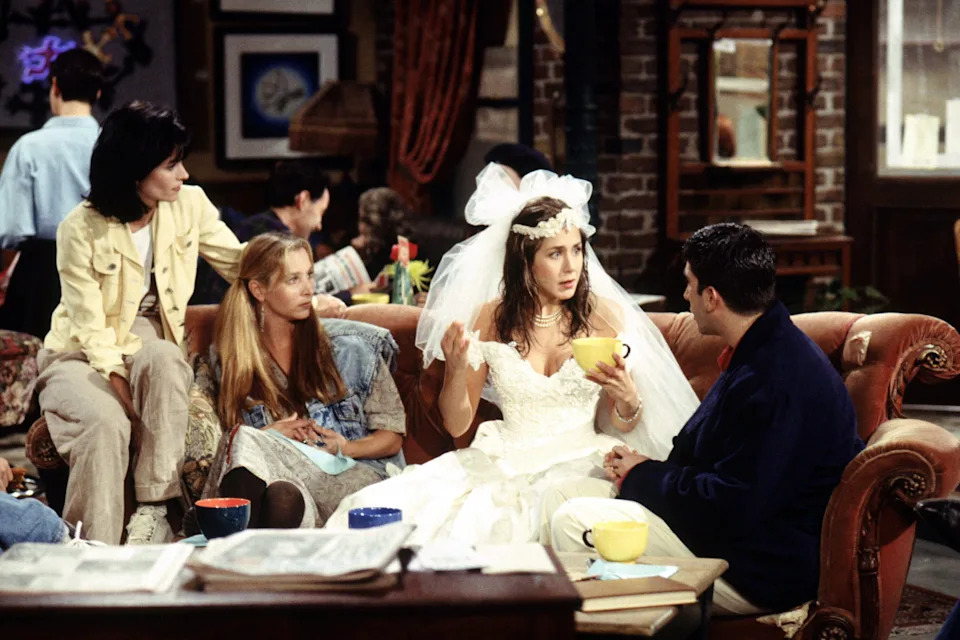 Courteney Cox, Lisa Kudrow, Jennifer Aniston and David Schwimmer in the first episode of Friends in 1994. (Warner Bros./Courtesy of Everett Collection)
Courteney Cox, Lisa Kudrow, Jennifer Aniston and David Schwimmer in the first episode of Friends in 1994. (Warner Bros./Courtesy of Everett Collection)“The unfortunate reality is that the No. 1 condition that made ‘hanging out’ possible in those shows — economy — no longer provides the proper conditions for it to occur,” Hite says. “I still watch Friends regularly. It is and has been a tremendously funny show with great characters, but now I am more interested in noting all that was present in the show that has disappeared from the American landscape and the fabric of American society: the twin towers, the ease and affordability of travel, availability of employment options, live entertainment [and] affordable coffee.”
The dominant millennial style of hanging out today looks more like a workplace comedy like The Office. The series is also a popular nostalgia-watch but is soon to have its own spin-off in September. Shows currently on the air like It’s Always Sunny in Philadelphia, Abbott Elementary, Tires and The Bear all technically fall into this category. Their characters are falling in love, getting into hijinks, navigating professional problems and finding their closest friends at work instead of home or a designated third place for hanging out.
Shows — and their audiences — are multitasking
There is an element of hanging out that is crucial to shows that technically fall into other genres too — especially shows that defy typical TV conventions. Rian Johnson created the mystery series Poker Face to subvert tropes left and right. Rather than a typical “whodunnit,” it’s a “whydunnit” or “howcatchem”that focuses on the motive behind a crime and how the suspect is caught rather than just who did it. Johnson tells Yahoo he cast Natasha Lyonne as the lead because the unconventional show needed someone “who is not just a really good actor but is a presence on the screen that you just want to hang out with.”
AdvertisementAdvertisement#_R_1cn2adkalhb5fiv5vddbH1_ iframeEach episode sees Lyonne dropped into a new setting with new costars and characters. She plays Charlie Cale, who has a knack for telling when people are lying, so each week we follow her sleuthing as we would the title character of Colombo.
 Natasha Lyonne in Poker Face. (Karolina Wojtasik/Peacock)
Natasha Lyonne in Poker Face. (Karolina Wojtasik/Peacock)“That’s a really rare, unique thing, and I feel that Natasha is one of the few people on earth who has that … it’s a hangout show, really,” Johnson says. “The mystery is kind of second-tier to [audiences] wanting to hang out with Charlie Cale every week.”
Poker Face might be the exception to the rule. Without lovable characters and nail-biting plot points driving each episode, would watching a true-to-its-2025-setting hangout show even be that much fun? In real life, people are on their phones and use social media too much, and that would look odd — or at least uninteresting — onscreen.
Lori Bindig Yousman, a communications professor at Sacred Heart University, tells Yahoo that “the characters of Friends or Seinfeld could sit around and have uninterrupted conversations because they didn’t have distractions like their smartphones to pull them away from their conversations.”
AdvertisementAdvertisement#_R_1g72adkalhb5fiv5vddbH1_ iframe“If those same sorts of scenes appeared in a show today, audiences wouldn’t find their behavior realistic because they would expect the characters to be constantly texting, scrolling, liking or taking selfies just like we do in our real-life hangouts,” she says.
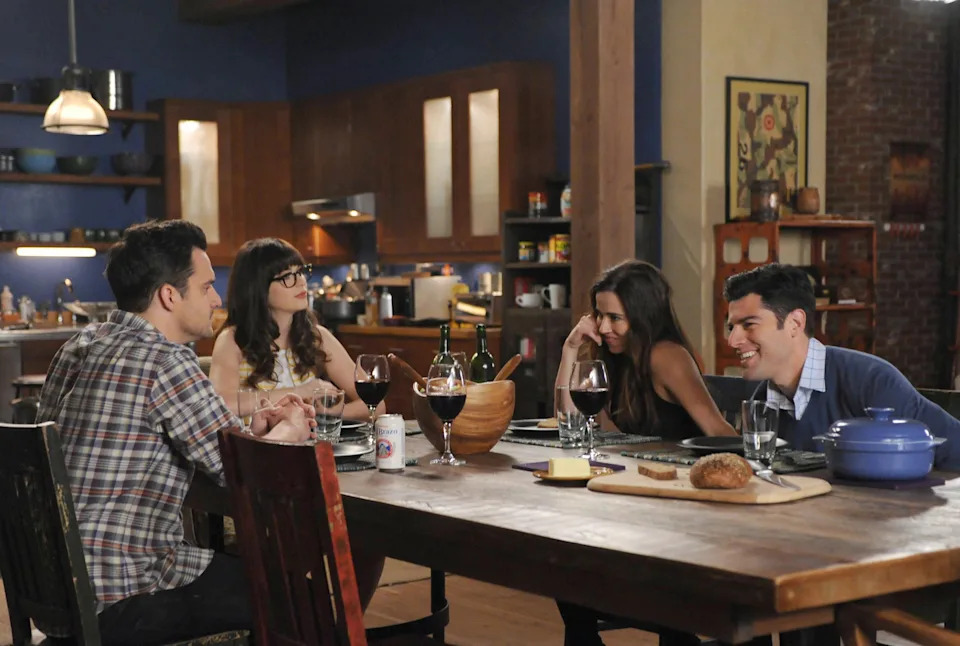 Jake Johnson, Zooey Deschanel, Linda Cardellini and Max Greenfield in a 2014 episode of New Girl, which is considered one of the last hangout TV shows. (Ray Mickshaw/Fox/Courtesy of Everett Collection)
Jake Johnson, Zooey Deschanel, Linda Cardellini and Max Greenfield in a 2014 episode of New Girl, which is considered one of the last hangout TV shows. (Ray Mickshaw/Fox/Courtesy of Everett Collection)We’re probably on our phones while watching those shows too, Yousman says, which might also contribute to the popularity of nostalgic shows we’ve already seen.
“Audiences who are already familiar with these shows can easily watch them while multitasking because they already know the characters and the general storylines,” she says. It’s mindless viewing, just like scrolling.
Everyone’s just hanging out online
Though experts agree that the television landscape has shifted away from hangout shows, that doesn’t mean people don’t still crave the feeling of hanging out with a character. They’ve just taken those interactions and feelings online, instead of sitting in front of a TV screen.
AdvertisementAdvertisement#_R_1jn2adkalhb5fiv5vddbH1_ iframeRoy Orecchio, a TV showrunner and associate film professor at Arizona State University, tells Yahoo there’s actually “more hangout content than has ever existed, but those hangouts are not happening on legacy broadcast or legacy cable television networks.”
Since people now go online to see content tailored to them, they expect more niche content and a more interactive experience. Hangout TV still exists — it’s just user-generated.
Max Cutler, founder of content creation company PAVE Studios, tells Yahoo that “hangout energy has migrated into the world of video podcasts” too. His goal is to help produce shows that feel like friend groups you can catch up with any time, tapping into the existing audiences that content creators already have.
Those influencers know that YouTube, where they can upload podcasts and other kinds of video, is the best place to grow a huge audience. The platform is technically the biggest television distributor in the world, according to Nielsen data from April 2025. That means it’s bigger than Disney, Netflix, Paramount and any other network or streaming service you could think of. The way people consume entertainment has clearly shifted, and so has the way people hang out — of course hangout TV is part of that.
AdvertisementAdvertisement#_R_1mn2adkalhb5fiv5vddbH1_ iframeCutler says that online creators have been able to match the production schedules of traditional TV while giving people what they truly want these days: authenticity. That allows for them to build the type of emotional connection and community that traditional television shows just can’t. People are resistant to things that feel manufactured, even if that has traditionally meant that they are well-produced.
Entertainment is always evolving
But don’t give up on the hangout show altogether. Tim Stevens, a writer for the office of marketing and communications at Connecticut College, tells Yahoo that the decline of hangout TV could just be part of the “cycle and churn of TV.”
“For a time, serialized dramas ruled. Then, perhaps, procedurals, or supernatural shows or sitcoms. Some of this is just the natural process of peaks and valleys,” he says. “Apps like TikTok are filled with scenes and edited pieces showcasing the best jokes or characters from hangout shows past and present. Some accounts exist purely to provide this content.”
People still want to hang out with their favorite characters; they just want to do it on their own terms. It’s a problem too modern to be solved on something so antiquated as a television screen.
If you buy something through a link in this article, we may earn commission.



![Osteobiologics Market: Industry Size and Growth Trends [2028] Analyzed by TechSci Research](http://www.paseban.com/zb_users/upload/2025/07/20250718054827175278890731005.jpg)






